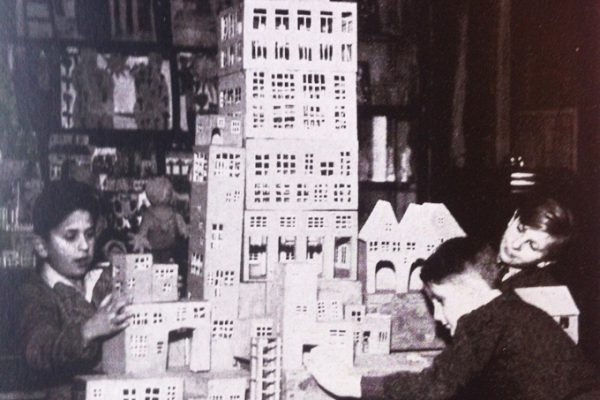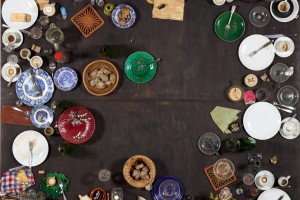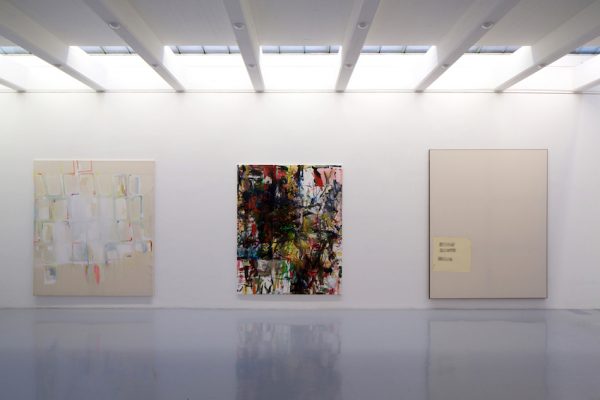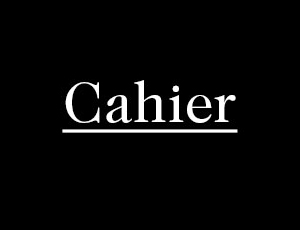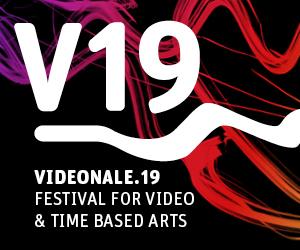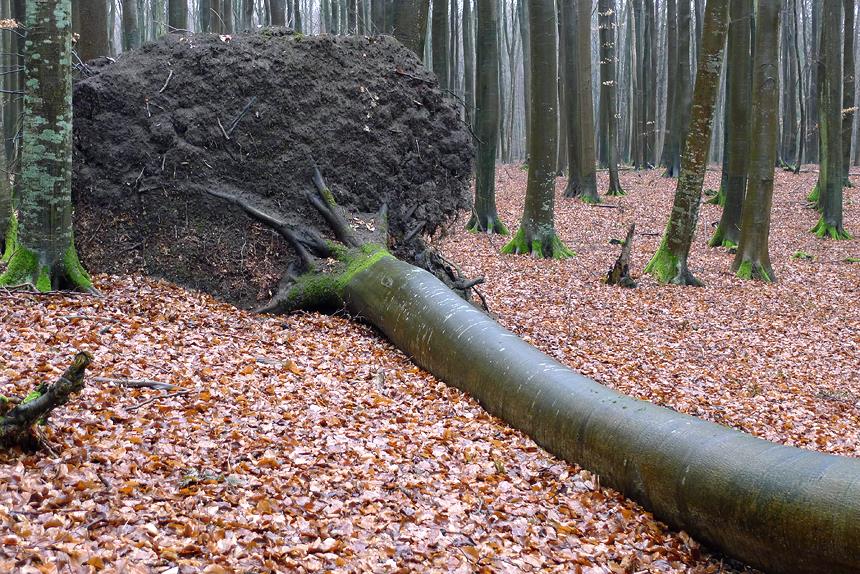
Galerie Heiner Friedrich, Munich, Cologne, New York, 1963–1980
Zentralarchiv des Internationalen Kunsthandels on Its Holdings: Günter Herzog on a Legendary Art Dealer
During the 1960s and 1970s, Galerie Heiner Friedrich played an extraordinarily important role for the development, the reputation, and the international orientation of the West German art world, but for Heiner Friedrich it was only the first step along a path towards a life-relationship with art that seeks its equal in probably every way.
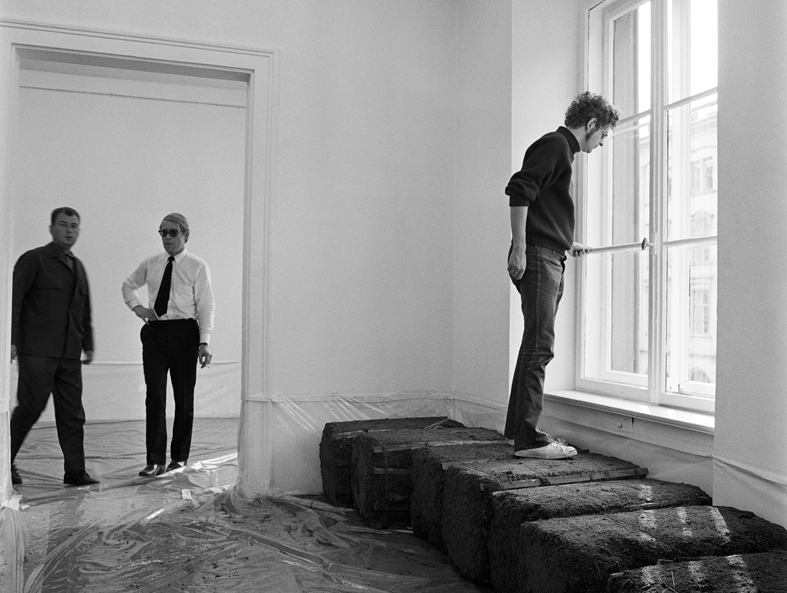
Walter De Maria, Heiner Friedrich and assistant during the Installation of the exhibition ‘Dirt Show / The Land Show: Pure Dirt, Pure Earth, Pure Land’ (later called ‘Earth Room’), Galerie Heiner Friedrich, Munich, Maximilianstraße, 28. 9. – 10. 10. 1968. picture: Galerie Heiner Friedrich. ZADIK
It all began at a Carnival party in Munich in 1963, when Six Friedrich, since 1961 Heiner’s wife, met Franz Dahlem, who was of the same age and had contact to young artists. Together they founded—virtually overnight—the Galerie Friedrich und Dahlem which opened on July 27, 1963 in a first-floor apartment at Maximilianstraße 15 in Munich. With Gerhard Richter, recommended to the gallerist by Kaspar König during his years in London, the gallery showed in the summer of 1964 the first of a long series of national and international artists that in the course of time were acknowledged as key figures of recent art history and achieved fame. The second, Cy Twombly, followed in November 1964. In 1965, Friedrich was introduced to the artists in New York that would further define the course of the gallery’s program. Among the pop artists, in particular Andy Warhol and John Chamberlain who remained constants in the subsquent exhibition program, from the protagonists of minimal, conceptual, and land art especially (iin the order of their solo exhibitions at Friedrich) Sol LeWitt, Carl André, Dan Flavin, Walter der Maria, Fred Sandback, Mel Bochner and Michael Heizer, who belonged to the gallery program as of 1968. Another important discovery in 1965 was the then 22-year-old Palermo, who Friedrich spotlighted in his first one-man show from May to July 1966.
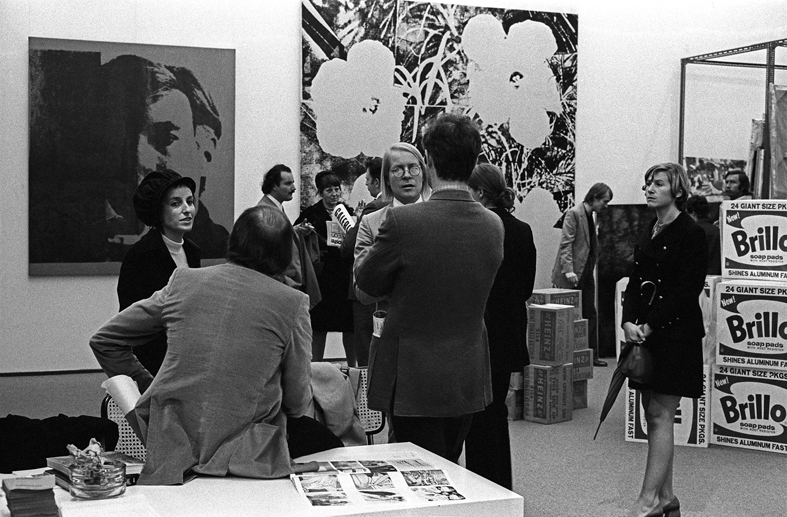
Kunstmarkt Cologne, art fair booth of Galerie Heiner Friedrich, 13. – 18. 10. 1970. picture: Anita Kloten, Köln.
Friedrich felt isolated from Munich’s art world, in Cologne the situation for the art market in 1967 seemed much more favorable. Increasing numbers of galleries and with them their artists were moving to the city. In 1968, there were 26 galleries, many of which were dedicated to contemporary art, and in 1969 there were already 36. The annual art fair and Fischer and Strelow’s Prospect in neighboring Düsseldorf attracted international collectors, and the density of collectors in the Rhineland and the neighboring BeNeLux countries was much higher than in Munich. So Friedrich opened his Cologne gallery in 1970 in the so-called Galerienhaus on Lindenstraße 20, which already housed the galleries Rolf Ricke, Hans Neuendorf, M. E. Thelen, Hans-Jürgen Müller, and Dieter Wilbrand (still there today).
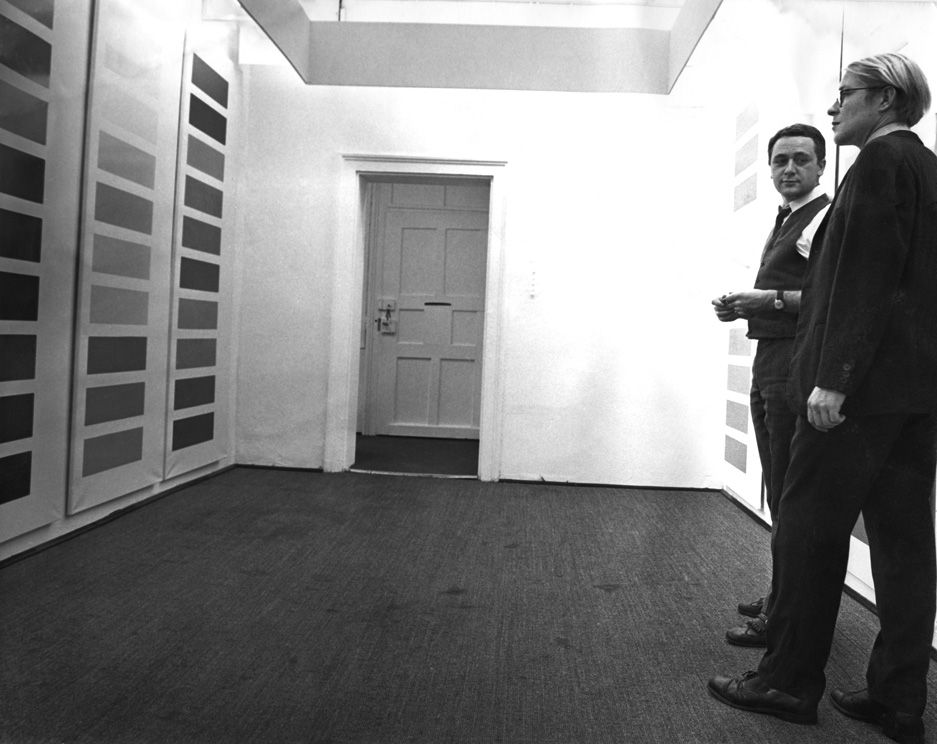
Gerhard Richter and Heiner Friedrich in Richter’s exhibition ‘Farbtafeln’, Galerie Friedrich + Dahlem, Munich, 11. 10. – 27. 10. 1966. picture: Galerie Friedrich + Dahlem. ZADIK
Since 1969, Heiner Friedrich had used all his powers to realize spectacular works of art in promoting public art at the sites of the Munich Olympics in 1972.
Beside proposals by Carl Andre, Dan Flavin, and Andy Warhol there was Michael Heizer’s project Levitated Mass Olympia, a color-field installation according to a joint design by Gerhard Richter and Palermo and Walter de Maria’s Vertical Earth Kilometer. When all these projects were rejected, Friederich explains, “I decided to leave Germany and to try to realize my ideas in America.” The Olympia projects in particular an the disappointment about their rejection made it clear that Heiner Friedrich wanted to go beyond gallery work.
To realize his new art projects in an institutional form, Friedrich took recourse to the model he was most familiar with, opening Heiner Friedrich Gallery Inc. in 1973 at Wooster Street 141 in New York’s SoHo. He worked from the very start with Helen Winkler, but the gallery work was not primary , but the realization of larger, more enduring projects. With Helen Winkler and her friend of many years Philippa de Menil, the youngest daughter of the Houston collector’s family (Menil Collection), who now also became his friend, Friedrich forged plans to establish a foundation, which took place in 1974. The goal of the foundation,” as is reported in its first annual report in 1975, “was to plan public projects, to realize and maintain them, that due to their high costs or size cannot be realized, financed, or maintained by individual collectors.” Friedrich and Philippa de Menil traveled a great deal, for example across the United States in such of the right terrain for the foundation’s first project, Walter de Maria’s Lightning Field. 1975, the foundation purchased 24 square kilometers in New Mexico and Helen Winkler and her later husband, the artist Robert Fosdick, worked until 1977 together with Walter de Maria in realizing his “answer to Stonehenge.”
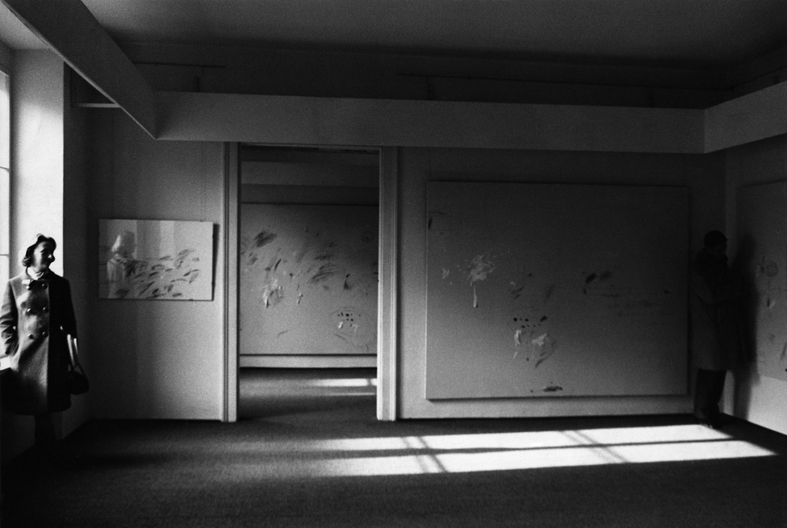
Installation view “Cy Twombly: The artist in the Northern Climate” with visitors, Galerie Friedrich + Dahlem, Munich, Maximilianstraße, 15.11.-31.12.1964. picture: Galerie Friedrich + Dahlem. Thordis Moeller Archiv, Millerton, USA
Top picture: Konrad Lueg, Sigmar Polke, Blinky Palermo and Gerhard Richter in front of Galerie Heiner Friedrich Cologne

